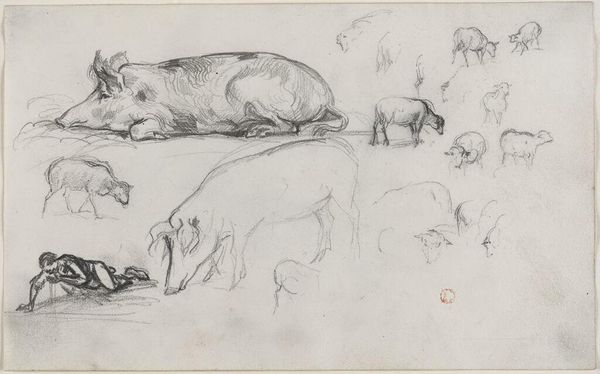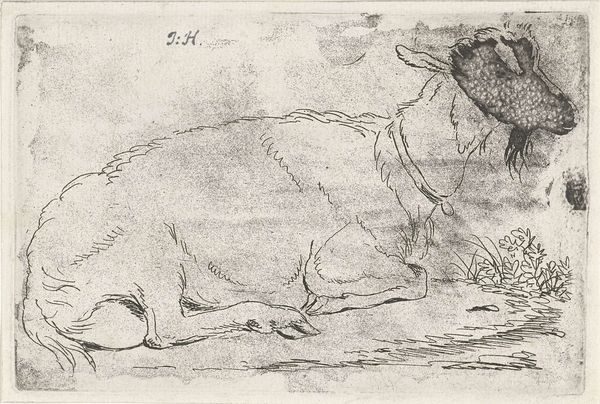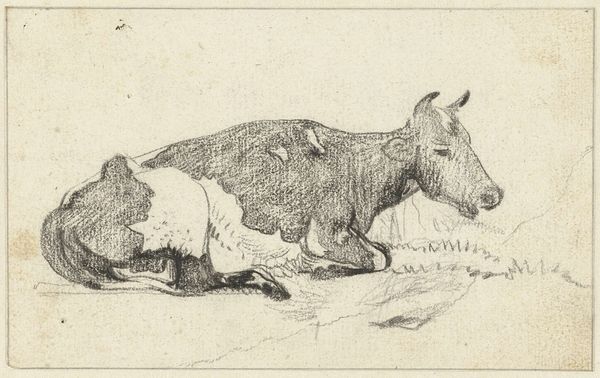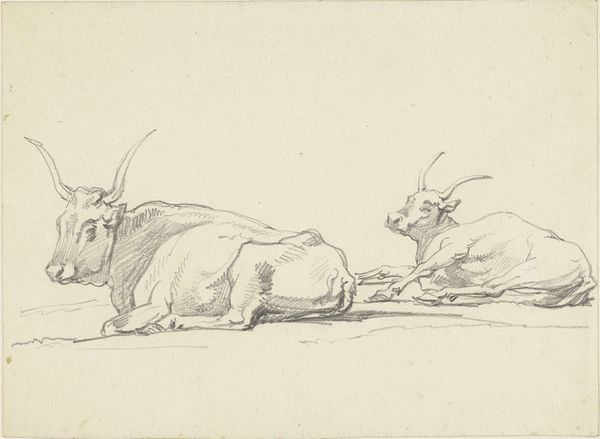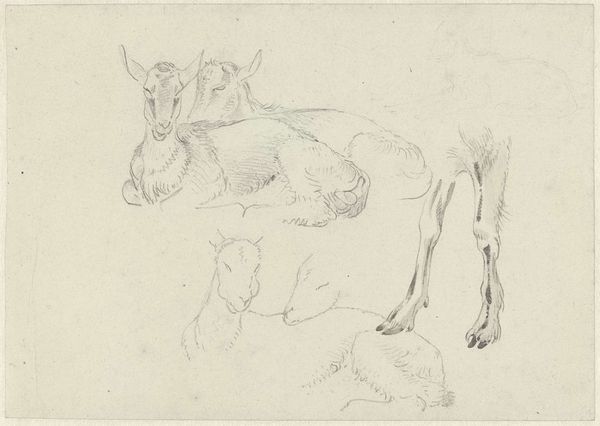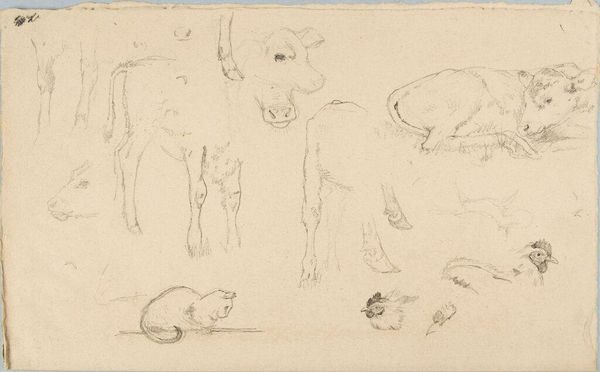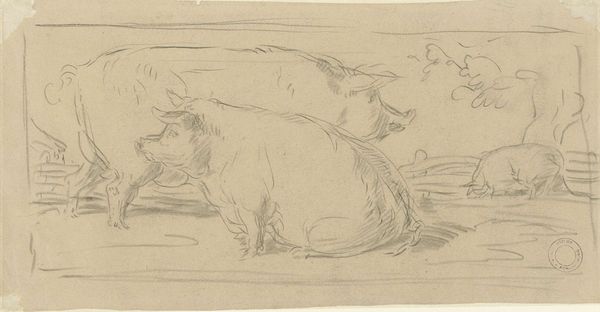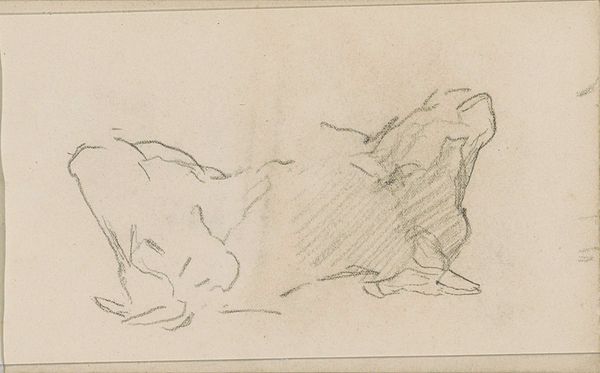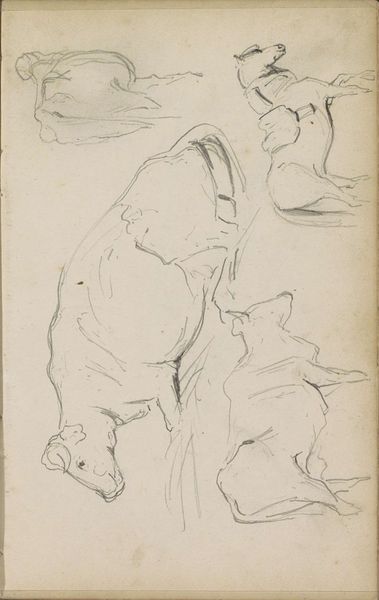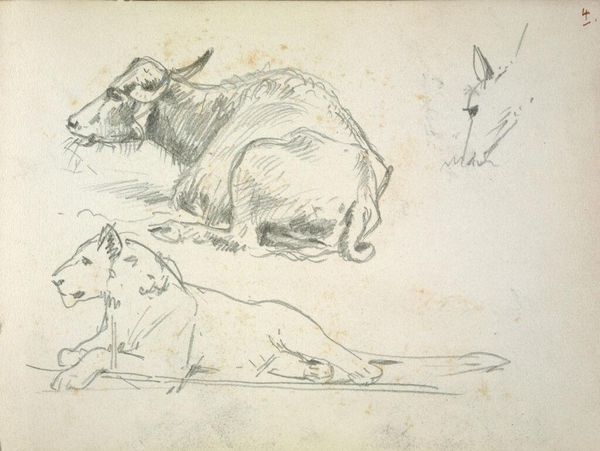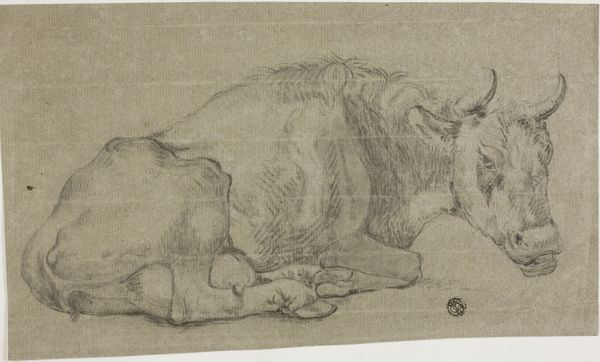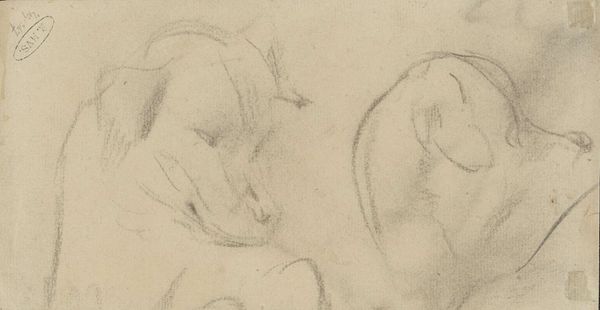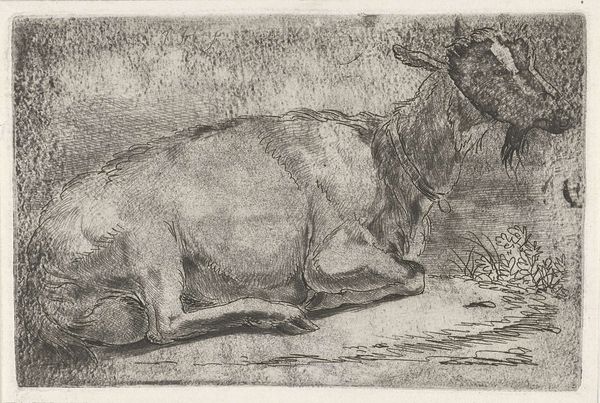
drawing, dry-media, pencil
#
portrait
#
drawing
#
amateur sketch
#
quirky sketch
#
pencil sketch
#
dog
#
incomplete sketchy
#
dry-media
#
personal sketchbook
#
idea generation sketch
#
sketchwork
#
pencil
#
sketchbook drawing
#
fantasy sketch
#
realism
#
initial sketch
Dimensions: height 110 mm, width 185 mm
Copyright: Rijks Museum: Open Domain
Editor: This is "Sketches of a Dog, Lying on a Chair" by Guillaume Anne van der Brugghen, created sometime between 1821 and 1890. It’s a pencil drawing, and what strikes me most is how casual it feels. It reminds me of quick sketches one might find in a personal sketchbook. What do you see in this piece? Curator: It's interesting you mention the casualness. I see that too, but it leads me to consider the social function of amateur art making in the 19th century, particularly within bourgeois circles. How does the seemingly innocuous subject – a dog – actually participate in constructing and reinforcing class identity? Editor: Class identity? I wouldn’t have thought about that. Curator: Consider this: Leisure time and the means to pursue artistic hobbies like sketching were markers of social standing. Domestic animals, especially pampered ones, further symbolized affluence and sentimental values associated with home and family. This wasn't just a dog; it was *their* dog, carefully positioned within *their* domestic space. Editor: So, the act of sketching itself, along with the subject matter, becomes a statement? Almost like a subtle performance of privilege? Curator: Exactly! Think about who had access to education, materials, and leisure in that period. How might a drawing like this – seemingly personal – contribute to broader cultural narratives about power and access? Notice the contrast between the rough sketches and the clearly ornamented chair – whose story is being prioritized here? Editor: That’s really fascinating. I was so focused on the dog's pose; I hadn’t considered the underlying societal implications. I see so much more now, it is more than meets the eye. Curator: Precisely. By examining these everyday scenes through a critical lens, we start to unravel the complex layers of meaning embedded within seemingly simple artworks. There's always a story behind the image, it's up to us to excavate them.
Comments
No comments
Be the first to comment and join the conversation on the ultimate creative platform.
